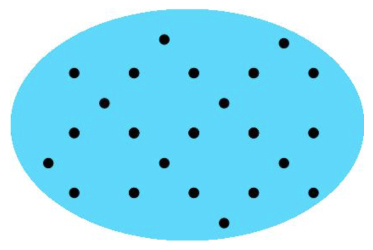Or search by topic
Number and algebra
Geometry and measure
Probability and statistics
Working mathematically
Advanced mathematics
For younger learners
Representing Numbers



- Problem
- Student Solutions
- Teachers' Resources
Representing Numbers

Find as many ways as you can of representing the number of dots shown above.
Try to find at least five ways.
Now find ways of representing ten times as many dots. Can you still find at least five different ways?
Why do this problem?
This problem gives an opportunity for children to think about ways in which numbers can be represented and to be creative as they invent original ways of their own. The task may peak individuals' curiosity as they may explore different ways of grouping, lining up or gathering.
Possible approach
Show the image to the group and ask them how many dots there are. Take the image away and ask learners to talk to a partner about how they counted. (See the task How Would We Count?.) Put the image back up and encourage conversation about ways of counting, perhaps sharing some ways with the whole group. Highlight particular strategies that have been used, such as
grouping, seeing lines of dots etc.
You can then set learners off on the challenge itself. You could ask them to record their representations on separate sheets of paper and then at an approprate time, invite everyone to walk around the room looking at the different ways.
A plenary could focus on discussing a few ways in particular, or you could ask if anyone has a question they would like to put to a pair about their representation.
Key questions
Tell me about these.
Will there be more ways?
Would someone else understand what you are representing here?
Possible extension
Replace the "ten times as many" with "nine times as many".
Possible support
It may be helpful to look at the article Children's Mathematical Graphics: Understanding the Key Concept which looks at the different ways children can record their thinking and understanding.
You may also like
Which Scripts?
There are six numbers written in five different scripts. Can you sort out which is which?
The Deca Tree
Find out what a Deca Tree is and then work out how many leaves there will be after the woodcutter has cut off a trunk, a branch, a twig and a leaf.
A Mixed-up Clock
There is a clock-face where the numbers have become all mixed up. Can you find out where all the numbers have got to from these ten statements?

